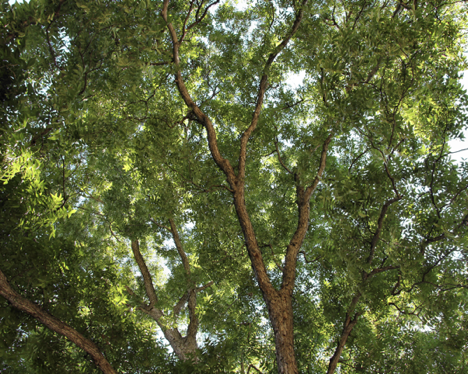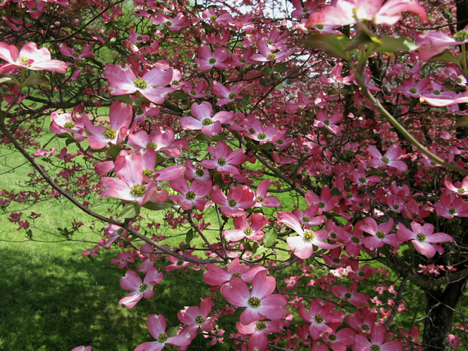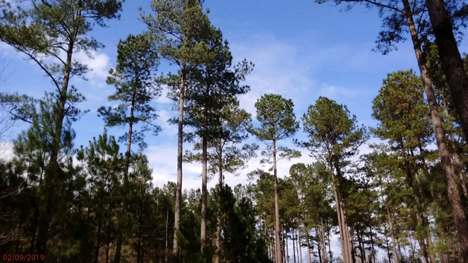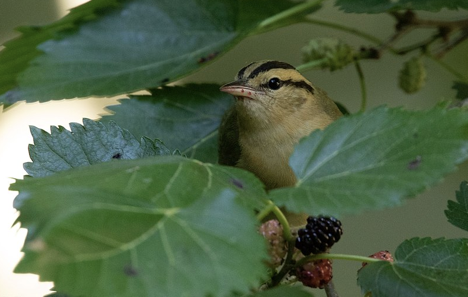by Victor Wang
Texas is a paradise for trees. From the piney woods of East Texas to the oak forests of Central Texas, the Lone Star State is home to many native tree species. But before you plant just any old tree in your yard, take a moment to think about the kind of tree and what it will do. How much shade will it create? Can it withstand a vicious windstorm or hurricane? Will its seeds, sap, or leaves make a mess? Here are some of the best and worst trees to plant around your Texas home, according to The Local Tree Experts.
The Best
Live Oak
The live oak, with its sprawling, twisting branches, is a charming addition near your home. It’s a native species, and this is the tree that is often used for the “low ’n slow” smoke used in iconic Texas barbecue. Is there anything more Texas than that?
Keep in mind, live oak trees should be planted 40 to 50 feet away from all other trees and at least 70 feet between the live oak and your home, shed or driveway. The tree will eventually reach a height of 50 feet, and the roots may extend even farther.
Flowering Dogwood
The flowering dogwood is a spectacular addition to your yard. This tree will put on a show in the spring when it’s covered in white and pink blossoms. It gives an encore performance in the summer, with its red fruit, and again in fall when it’s decked out in colorful foliage. The flowering dogwood grows about 20 to 40 feet tall, which makes it perfect for yards with pools and yards that don’t have enough room for giant trees.
Pecan
It’s no wonder the pecan wins the honor of being the state tree. This native species is versatile, offering buttery nuts for pies and strong wood that’s used to build furniture and flooring. Be patient when planting this tree. It takes from four to eight years for it to produce nuts.
Loblolly Pine
When you think of the piney woods of Texas, you’re probably picturing a string of the native loblolly pine trees. This native species has the largest natural range of any Texas pine and can get up to 100 feet tall.
Magnolia
The magnolia tree is a symbol of the South — a longtime favorite because of its large, white, waxy blooms. This evergreen can get up to 80 feet tall. Its flowers produce a distinctive sweet scent guaranteed to perfume your yard on those hot summer evenings. Magnolias can survive in sandy soil with frequent watering and in clay soil with deep and less frequent watering. Mulching the soil around the tree will help it retain moisture and nourish the roots. It will also keep the weeds from spoiling the appearance of your beautiful tree.
The Worst
Tree of Heaven
Don’t let the name fool you. You definitely don’t want the tree of heaven around your Texas home. This native of China is an invasive species! It’s been in the U.S. since the 18th century when it became popular as a fast-growing shade tree. The problems? It grows very fast, sometimes edging out native trees, animals won’t eat it and it thrives in a lot of different conditions and growing regions, which has contributed to its spread.
Ash Tree
The emerald ash borer beetle decimated the forests of Michigan in the early 2000s, and as the name suggests, the insect loves ash trees. The pest has made its way to Texas and the South over the last 15 years, and arborists recommend you think twice about planting this near your Texas home. That’s why it’s one of the worst trees you can plant here.
Cottonwood
Whether you live in Tornado Alley or your home sits along the Gulf Coast and in the path of hurricanes — cottonwood is weak and prone to wind damage. A good Texas storm could not only damage your tree, but also send that damaged tree crashing down on your roof or your car, or people. Another problem? Allergies. Whether you’re allergic to cedar, mold, or ragweed, the Lone Star State is no stranger to allergens. Why add one more? Lots of people are allergic to the white fluff, or “cotton” that the tree produces.
Willow
Don’t get any ideas about planting a graceful weeping willow. This tree is the pits in Texas. A lot of it has to do with the wind — it breaks easily and could end up toppled onto your property. It’s also a short-timer, lasting only about 30 years. A longer-lived species is a better choice.
Mulberry
There are two native mulberry species — the red mulberry and the Texas mulberry. Together, their ranges pretty much cover the state. You might be wondering why, if they’re native and produce fruit that feeds the birds and animals, these trees are a bad idea next to your home. Three words: purple bird poop — and a lot of it. Birds love these trees and can’t get enough and they tend to leave a mess. Even worse, if the fruit has a chance to ferment, the birds get intoxicated and fly into things. And poop.
Texas, which stretches miles across different climate zones, is home to hundreds of species of trees, and the choices facing any Texas homeowner are vast. Don’t welcome just any tree into your yard — especially those that are invasive, messy or an allergen. If you choose wisely, you’ll get decades of pleasure from your tree.
Jackie Greene is a blogger, gardener, and writer for Wikilawn.com. She enjoys creating organic meals for family and friends using the fresh ingredients she produces from her backyard homestead.






